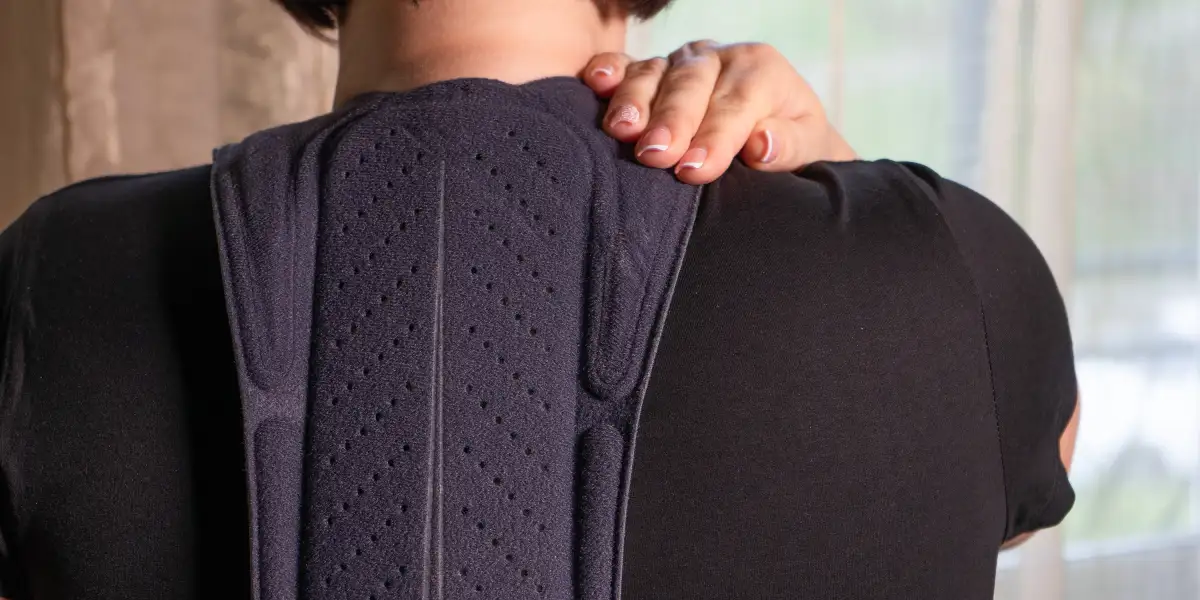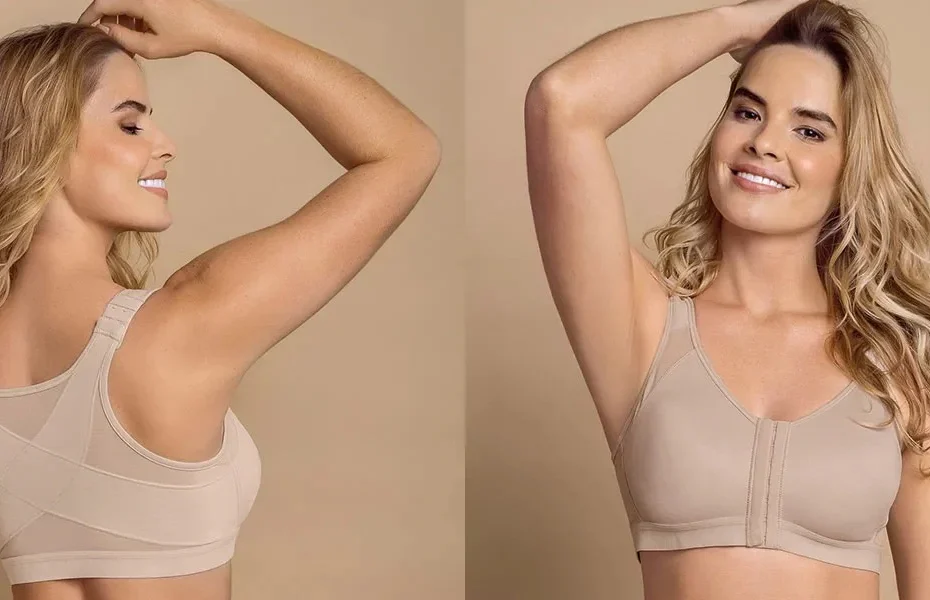In today’s fast-paced world, where hours are spent hunched over screens and desks, maintaining good posture has become a challenge for many. Poor posture not only affects our physical appearance but can also lead to various health issues. Fortunately, the rise of posture correctors has offered a solution to this modern problem. This article explores the world of posture correctors, examining their benefits, types, proper usage, and the importance of cultivating good posture habits.
I. The Importance of Good Posture:

- Understanding the Impact:
Poor posture can contribute to a range of health problems, including back and neck pain, headaches, and fatigue. Over time, it can lead to more severe issues such as spinal misalignment and reduced lung capacity.
- Health Consequences:
Discuss the long-term consequences of poor posture, including musculoskeletal problems, decreased flexibility, and how it can impact overall well-being.
II. How Posture Correctors Work:
- Mechanics Behind Posture Correction:
Explain the basic principles of how posture correctors function. They are designed to support and align the spine, shoulders, and neck, promoting a more natural and upright posture.
- Types of Posture Correctors:
- Brace-style Correctors: Describe how these are worn like a vest, providing support to the back and shoulders.
- Strap-style Correctors: Discuss the simple, strap-based designs that focus on pulling the shoulders back.
iii. Wearable Tech Correctors: Explore the emerging trend of smart posture correctors that use sensors and feedback mechanisms to alert users when they slouch.
III. Benefits of Using Posture Correctors:
- Pain Relief:
Discuss how posture correctors can alleviate back and neck pain by reducing strain on muscles and ligaments.
- Improved Confidence:
Explore how maintaining an upright posture can enhance self-confidence and project a more positive image.
- Increased Energy Levels:
Explain the link between good posture and improved energy levels, as proper alignment allows for better circulation and oxygen flow.
IV. Choosing the Right Posture Corrector:
- Consultation with Healthcare Professionals:
Emphasize the importance of consulting with a healthcare professional before using a posture corrector, especially for individuals with pre-existing conditions.
- Consideration of Body Type:
Different body types may require specific types of posture correctors. Discuss how individuals can choose the right one based on their unique needs.
- Comfort and Durability:
Highlight the significance of selecting a posture corrector that is comfortable to wear for extended periods and durable enough for regular use.
V. Proper Usage and Incorporating Good Posture Habits:
- Gradual Adjustment:
Advise users to gradually increase the time spent wearing a posture corrector to allow the body to adjust.
- Regular Breaks and Exercises:
Encourage incorporating regular breaks and posture-strengthening exercises into daily routines to complement the use of posture correctors.
- Mindful Posture Awareness:
Stress the importance of developing mindfulness about posture throughout the day, even when not wearing a corrector.
VI. Overcoming Common Misconceptions:
- Dependency Concerns:
Address the misconception that regular use of posture correctors leads to dependency and weakens natural support muscles.
- All-Age Applicability:
Clarify that posture correctors are suitable for individuals of all ages, provided they are used appropriately.
- Posture Correctors as a Supplement:
Emphasize that posture correctors are a tool to supplement good posture habits and not a standalone solution.
VII. Real-life Success Stories:
Share anecdotes or testimonials from individuals who have experienced positive outcomes from using posture correctors. Highlight how these devices have played a role in relieving discomfort, improving confidence, and promoting overall well-being. Personal stories can serve as inspiration for others considering the adoption of posture correctors.
VIII. Addressing Common Concerns:
- Discomfort Issues:
Acknowledge that some users may initially experience discomfort when using posture correctors. Explain that this discomfort is often a sign of the body adjusting to the corrected posture and should diminish over time.
- Consistency is Key:
Emphasize the importance of consistent and proper usage. Discuss how sporadic or incorrect usage may not yield the desired results and may even lead to discomfort or ineffectiveness.
- Individual Results May Vary:
Clarify that the effectiveness of posture correctors can vary from person to person. Factors such as body type, existing health conditions, and commitment to posture improvement habits all play a role in determining outcomes.

IX. Incorporating Posture Correction into Daily Life:
- Workplace Ergonomics:
Offer tips on creating an ergonomic workspace to promote good posture. Discuss the importance of an adjustable chair, proper desk height, and the placement of computer monitors.
- Stretching and Exercise Routine:
Provide a set of simple stretching and strengthening exercises that complement the use of posture correctors. These exercises can help build the muscles necessary for maintaining good posture.
- Mindful Posture Checks:
Encourage readers to integrate mindful posture checks into their daily routine. Set reminders to assess and correct posture periodically, even without the use of a corrector.
X. Future Trends in Posture Correction:
- Innovations in Technology:
Explore potential advancements in posture correction technology, such as the integration of artificial intelligence for personalized feedback and continuous monitoring.
- Customization and Personalization:
Discuss how future may become more tailored to individual needs, accounting for factors like body shape, activity levels, and specific health conditions.
- Holistic Wellness Approach:
Predict a shift towards a more holistic approach to wellness, where posture correction is seen as one aspect of a broader strategy that includes nutrition, fitness, and mental well-being.
Conclusion:
As we navigate the challenges of modern life, maintaining good posture has never been more critical. Posture correctors, with their diverse types and benefits, offer a practical solution for individuals seeking to improve their spinal health and overall quality of life. By understanding the importance of good posture, addressing common concerns, and incorporating these devices into a broader wellness routine, individuals can take meaningful steps towards achieving a healthier, more comfortable lifestyle. As technology continues to evolve, we can anticipate even more personalized and innovative solutions to support our journey towards better posture and well-being.
In conclusion, posture correctors have emerged as valuable tools in the quest for better spinal health and overall well-being. While they offer numerous benefits, it is crucial to approach their usage with a balanced perspective, combining them with conscious efforts to improve posture habits. By understanding the importance of good posture, selecting the right type of corrector, and incorporating it into a holistic approach to spinal health, individuals can pave the way to a healthier and more comfortable lifestyle.

